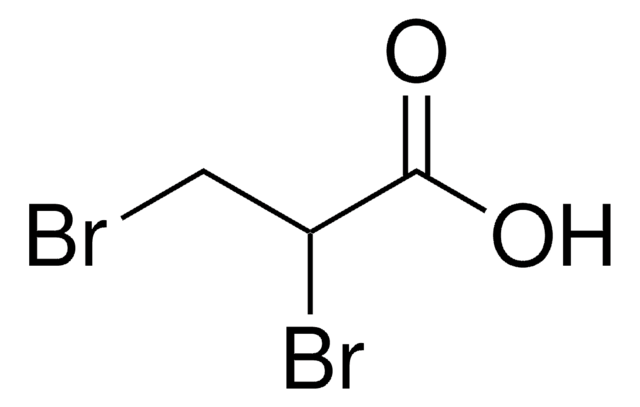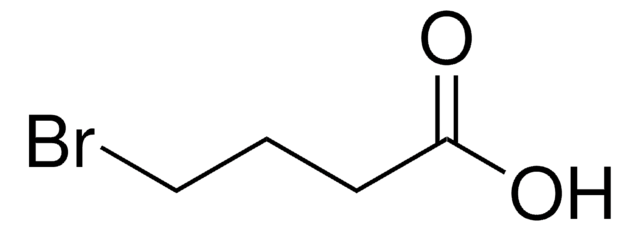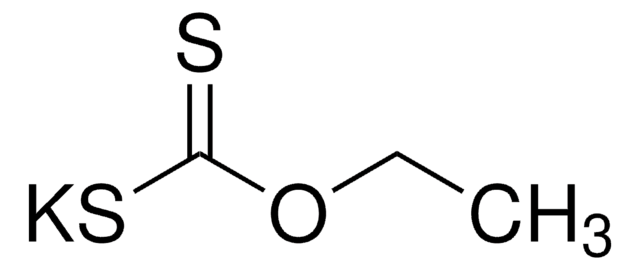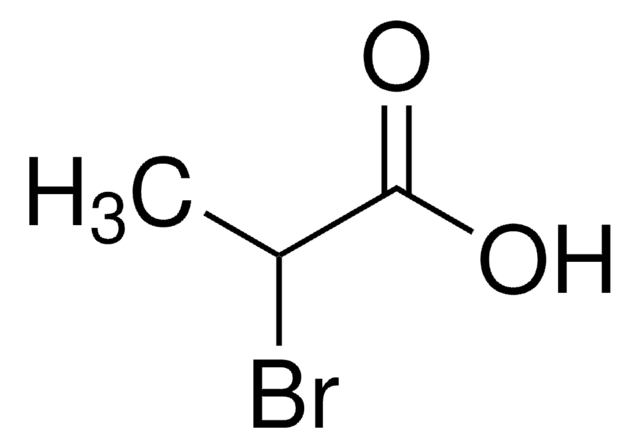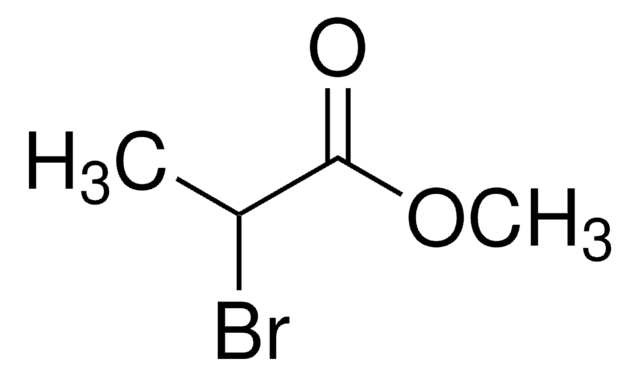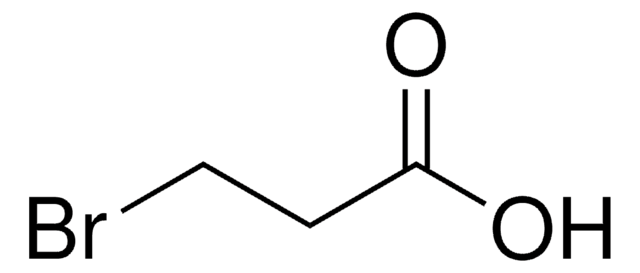147877
2-Bromobutyric acid
97%
About This Item
Productos recomendados
Análisis
97%
formulario
liquid
índice de refracción
n20/D 1.474 (lit.)
bp
99-103 °C/10 mmHg (lit.)
mp
−4 °C (lit.)
solubilidad
water: soluble 15 part
alcohol: soluble
diethyl ether: soluble
densidad
1.567 g/mL at 25 °C (lit.)
cadena SMILES
CCC(Br)C(O)=O
InChI
1S/C4H7BrO2/c1-2-3(5)4(6)7/h3H,2H2,1H3,(H,6,7)
Clave InChI
YAQLSKVCTLCIIE-UHFFFAOYSA-N
¿Está buscando productos similares? Visita Guía de comparación de productos
Aplicación
Palabra de señalización
Danger
Frases de peligro
Clasificaciones de peligro
Acute Tox. 4 Oral - Eye Dam. 1 - Skin Corr. 1B
Código de clase de almacenamiento
8A - Combustible corrosive hazardous materials
Clase de riesgo para el agua (WGK)
WGK 3
Punto de inflamabilidad (°F)
No data available
Punto de inflamabilidad (°C)
No data available
Equipo de protección personal
Faceshields, Gloves, Goggles, type ABEK (EN14387) respirator filter
Elija entre una de las versiones más recientes:
¿Ya tiene este producto?
Encuentre la documentación para los productos que ha comprado recientemente en la Biblioteca de documentos.
Nuestro equipo de científicos tiene experiencia en todas las áreas de investigación: Ciencias de la vida, Ciencia de los materiales, Síntesis química, Cromatografía, Analítica y muchas otras.
Póngase en contacto con el Servicio técnico